
How to Use Heart Pulse Sensor: Examples, Pinouts, and Specs
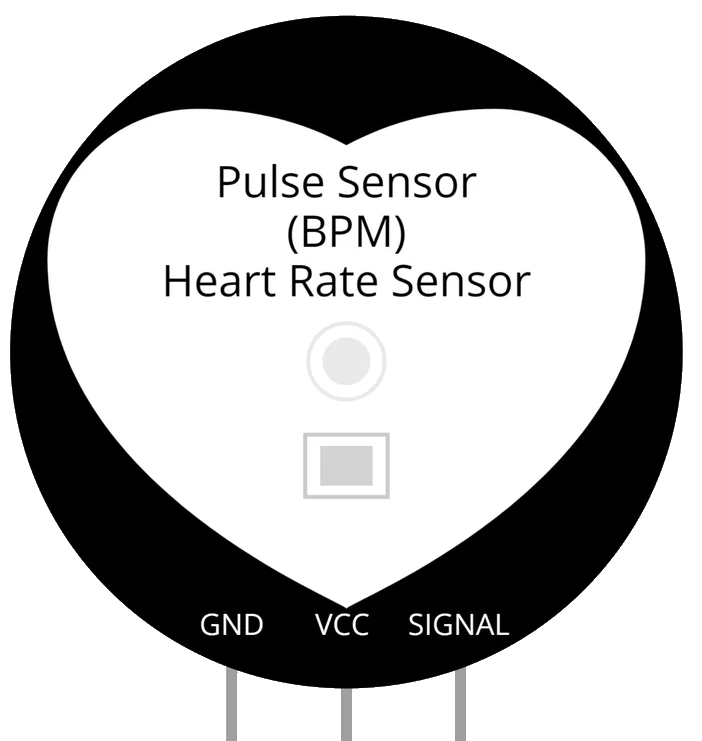
 Design with Heart Pulse Sensor in Cirkit Designer
Design with Heart Pulse Sensor in Cirkit DesignerIntroduction
The Heart Pulse Sensor is a compact and efficient device designed to detect and measure heartbeats by analyzing blood flow through the skin. It operates using photoplethysmography (PPG), a non-invasive optical technique that measures changes in blood volume. This sensor is widely used in health monitoring applications, fitness trackers, and biofeedback systems. Its ease of use and compatibility with microcontrollers make it a popular choice for both hobbyists and professionals.
Explore Projects Built with Heart Pulse Sensor
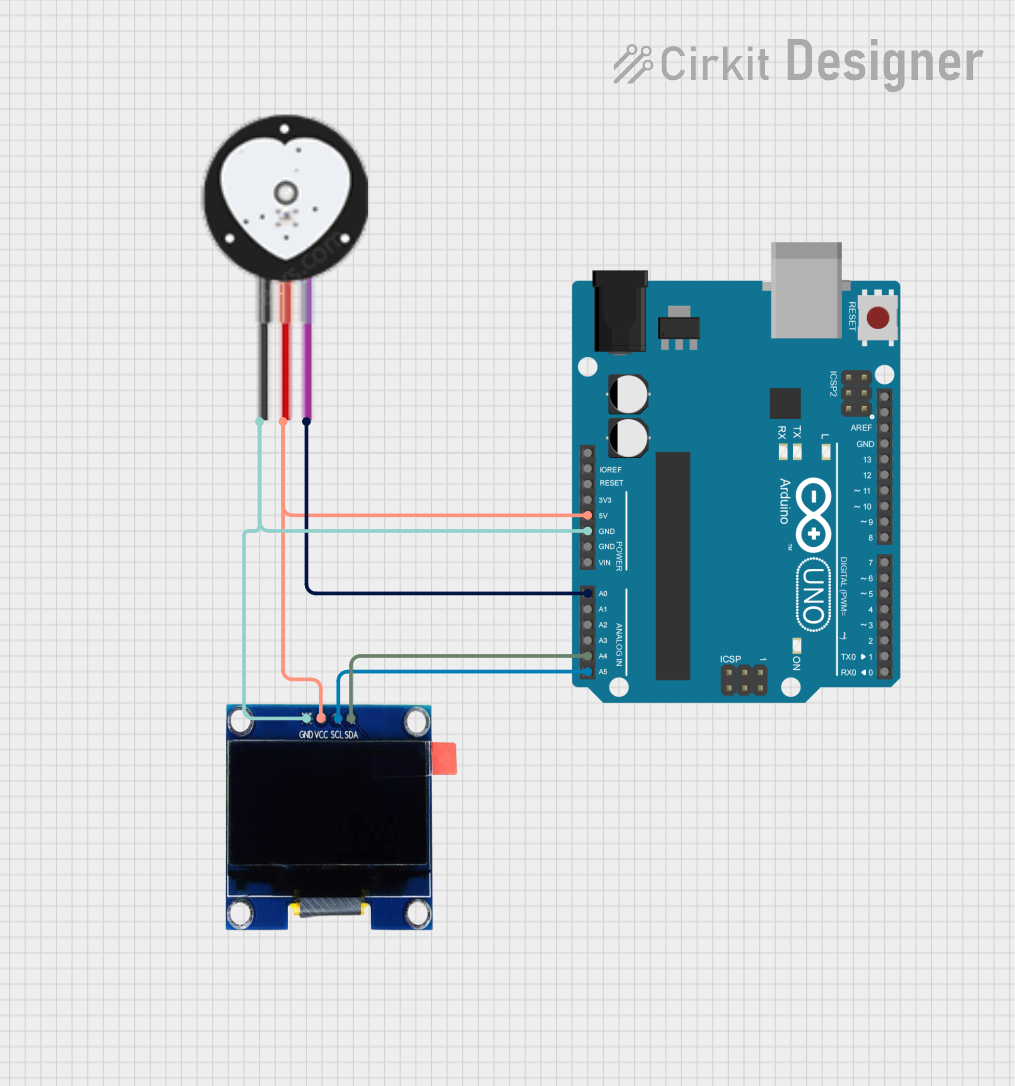
 Open Project in Cirkit Designer
Open Project in Cirkit Designer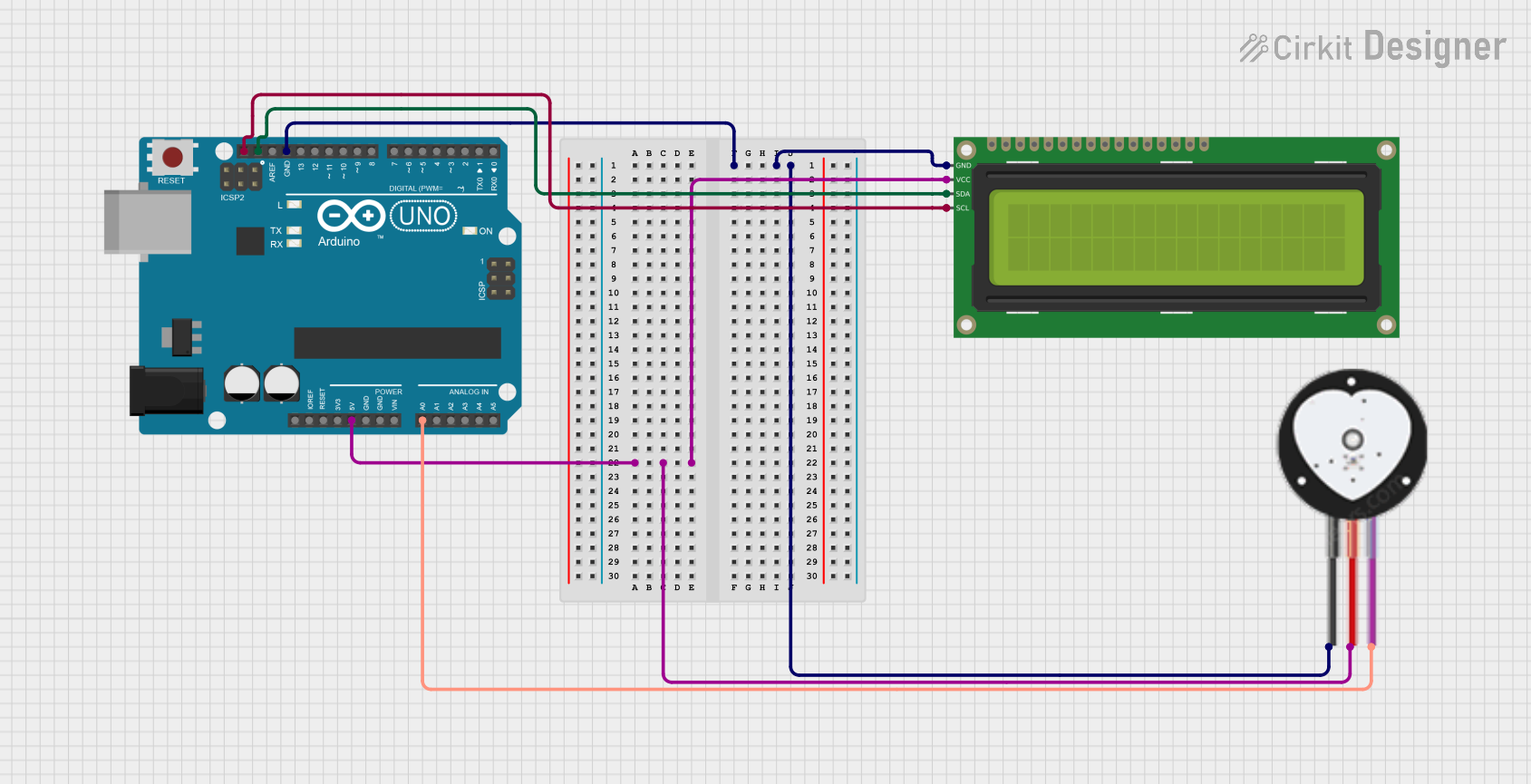
 Open Project in Cirkit Designer
Open Project in Cirkit Designer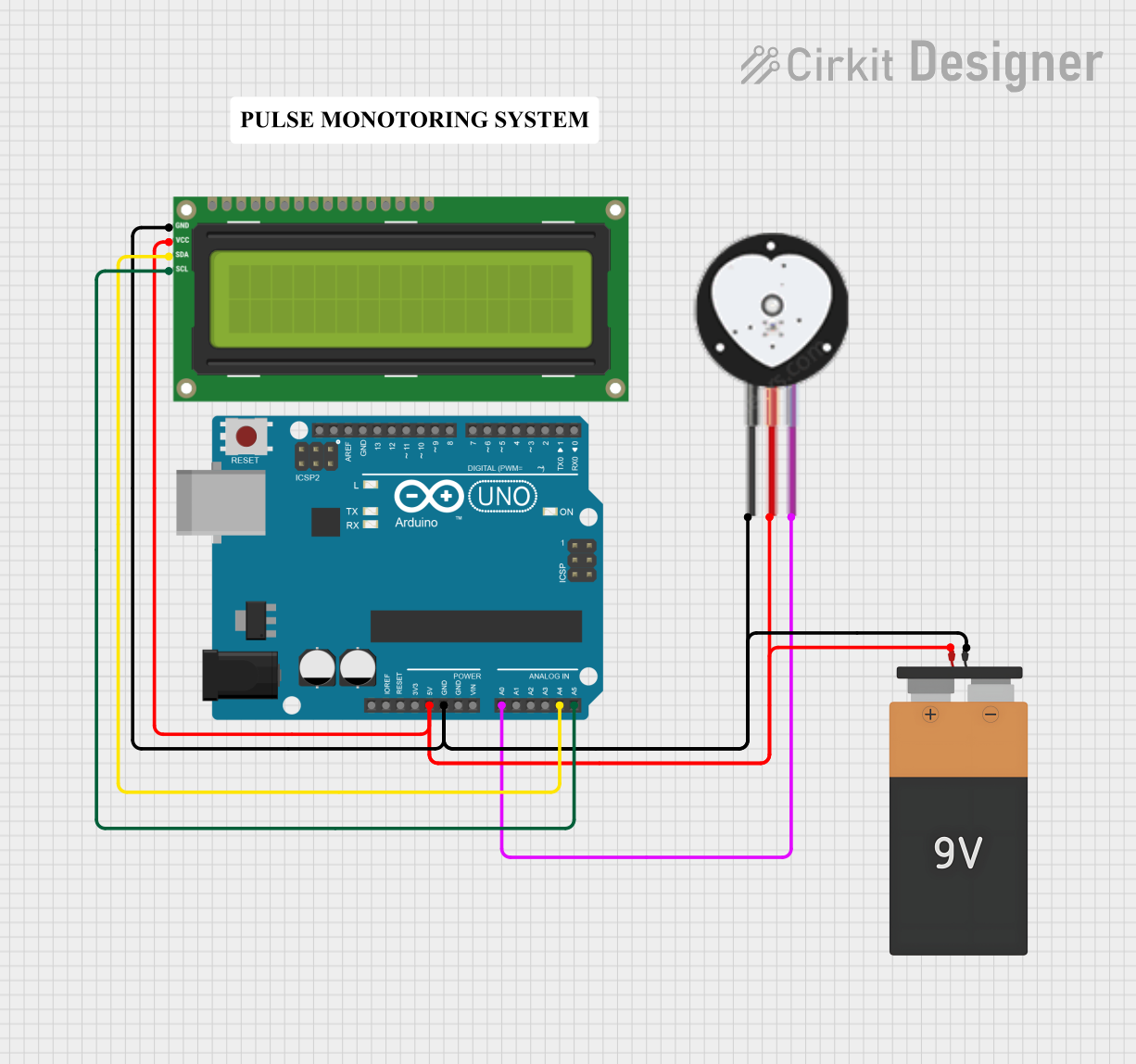
 Open Project in Cirkit Designer
Open Project in Cirkit Designer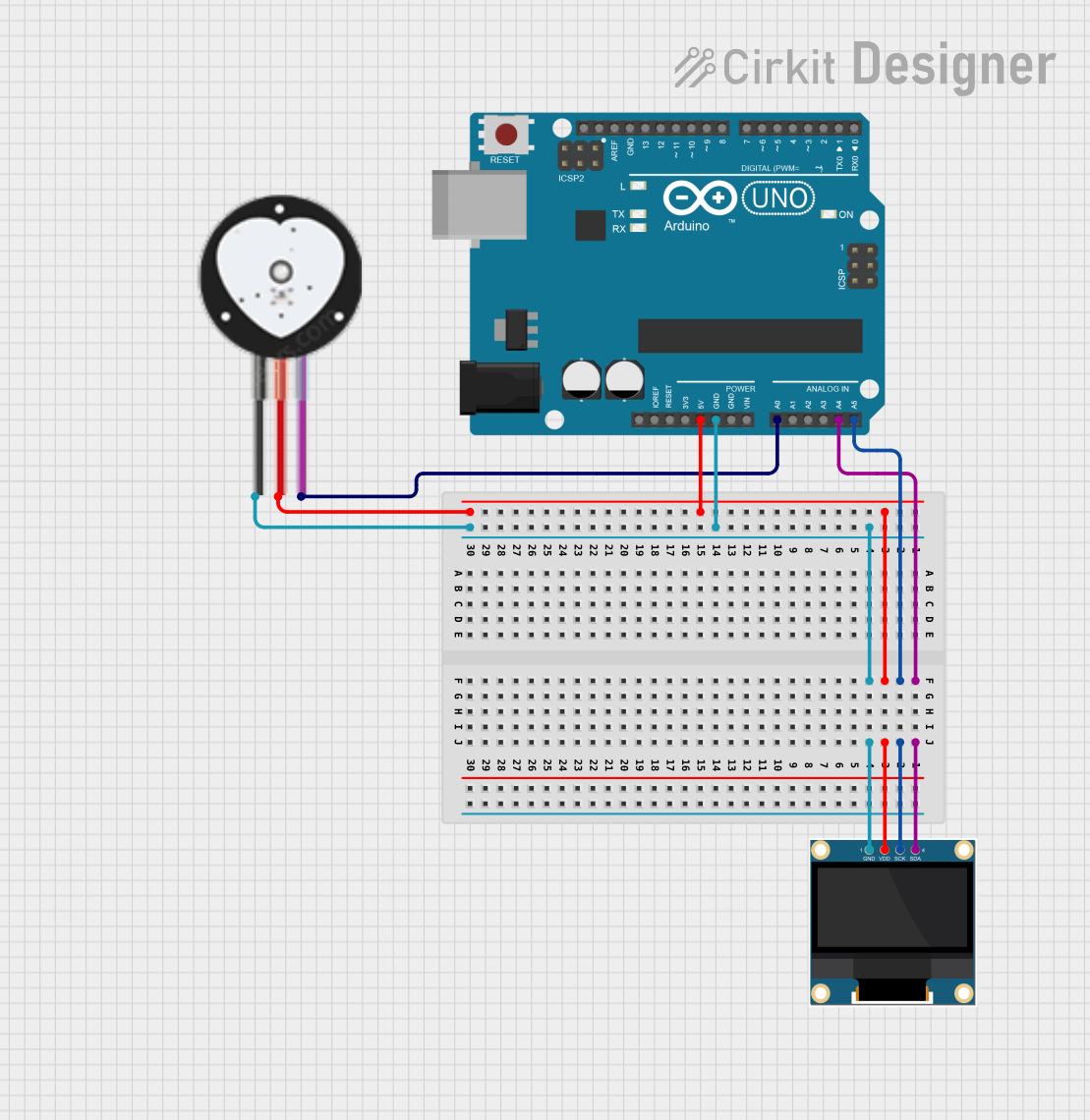
 Open Project in Cirkit Designer
Open Project in Cirkit DesignerExplore Projects Built with Heart Pulse Sensor

 Open Project in Cirkit Designer
Open Project in Cirkit Designer
 Open Project in Cirkit Designer
Open Project in Cirkit Designer
 Open Project in Cirkit Designer
Open Project in Cirkit Designer
 Open Project in Cirkit Designer
Open Project in Cirkit DesignerCommon Applications and Use Cases
- Fitness trackers and wearable health devices
- Heart rate monitoring in medical applications
- Biofeedback systems for stress management
- DIY electronics and Arduino-based projects
- Educational tools for learning about biosignals
Technical Specifications
The Heart Pulse Sensor is designed for low-power operation and high sensitivity. Below are its key technical details:
| Parameter | Value |
|---|---|
| Operating Voltage | 3.3V to 5V |
| Operating Current | 4mA (typical) |
| Output Signal | Analog voltage (0-5V) |
| Sensor Type | Optical (PPG) |
| Dimensions | ~25mm diameter |
| Interface | 3-pin header (VCC, GND, Signal) |
Pin Configuration and Descriptions
The Heart Pulse Sensor has a simple 3-pin interface:
| Pin | Name | Description |
|---|---|---|
| 1 | VCC | Power supply pin. Connect to 3.3V or 5V. |
| 2 | GND | Ground pin. Connect to the ground of the circuit. |
| 3 | Signal | Analog output pin. Provides the heartbeat signal. |
Usage Instructions
How to Use the Heart Pulse Sensor in a Circuit
Connect the Sensor:
- Connect the
VCCpin to a 3.3V or 5V power source. - Connect the
GNDpin to the ground of your circuit. - Connect the
Signalpin to an analog input pin of your microcontroller (e.g., Arduino).
- Connect the
Place the Sensor:
- Attach the sensor to a fingertip or earlobe using a clip or adhesive.
- Ensure the sensor is in contact with the skin for accurate readings.
Read the Signal:
- The sensor outputs an analog voltage that corresponds to the heartbeat signal.
- Use an analog-to-digital converter (ADC) to process the signal.
Important Considerations and Best Practices
- Ambient Light: Avoid exposing the sensor to direct sunlight or strong ambient light, as it may interfere with the readings.
- Motion Artifacts: Minimize movement during measurement to reduce noise in the signal.
- Power Supply: Use a stable power source to ensure consistent performance.
- Signal Filtering: Apply a low-pass filter in software to remove high-frequency noise from the signal.
Example Code for Arduino UNO
Below is an example of how to use the Heart Pulse Sensor with an Arduino UNO:
// Heart Pulse Sensor Example Code
// This code reads the analog signal from the sensor and displays the values
// on the Serial Monitor. Ensure the sensor is connected to A0.
const int pulsePin = A0; // Analog pin connected to the Signal pin of the sensor
int pulseValue = 0; // Variable to store the sensor reading
void setup() {
Serial.begin(9600); // Initialize serial communication at 9600 baud
pinMode(pulsePin, INPUT); // Set the pulse pin as an input
}
void loop() {
pulseValue = analogRead(pulsePin); // Read the analog value from the sensor
Serial.print("Pulse Value: "); // Print a label for the value
Serial.println(pulseValue); // Print the sensor value
delay(10); // Small delay to stabilize readings
}
Troubleshooting and FAQs
Common Issues and Solutions
No Signal Detected:
- Ensure the sensor is properly connected to the power supply and ground.
- Verify that the
Signalpin is connected to the correct analog input pin. - Check if the sensor is in proper contact with the skin.
Inconsistent Readings:
- Minimize movement during measurement to reduce motion artifacts.
- Use a software filter to smooth out noisy signals.
- Ensure the power supply is stable and free from fluctuations.
Low Signal Amplitude:
- Adjust the placement of the sensor for better contact with the skin.
- Ensure the sensor is not exposed to strong ambient light.
FAQs
Q: Can the Heart Pulse Sensor be used with a 3.3V microcontroller?
A: Yes, the sensor operates at both 3.3V and 5V, making it compatible with most microcontrollers.
Q: How do I process the raw signal to calculate heart rate?
A: You can use a peak detection algorithm to identify the peaks in the signal and calculate the time interval between them. The heart rate (in beats per minute) can be calculated as:Heart Rate = 60 / Time Interval (in seconds)
Q: Can I use the sensor for continuous monitoring?
A: Yes, the sensor is suitable for continuous monitoring, but ensure proper placement and minimize motion for accurate results.
Q: What is the typical range of the analog output?
A: The analog output typically ranges from 0V to 5V, depending on the detected signal strength.
By following this documentation, you can effectively integrate the Heart Pulse Sensor into your projects and achieve reliable heart rate measurements.